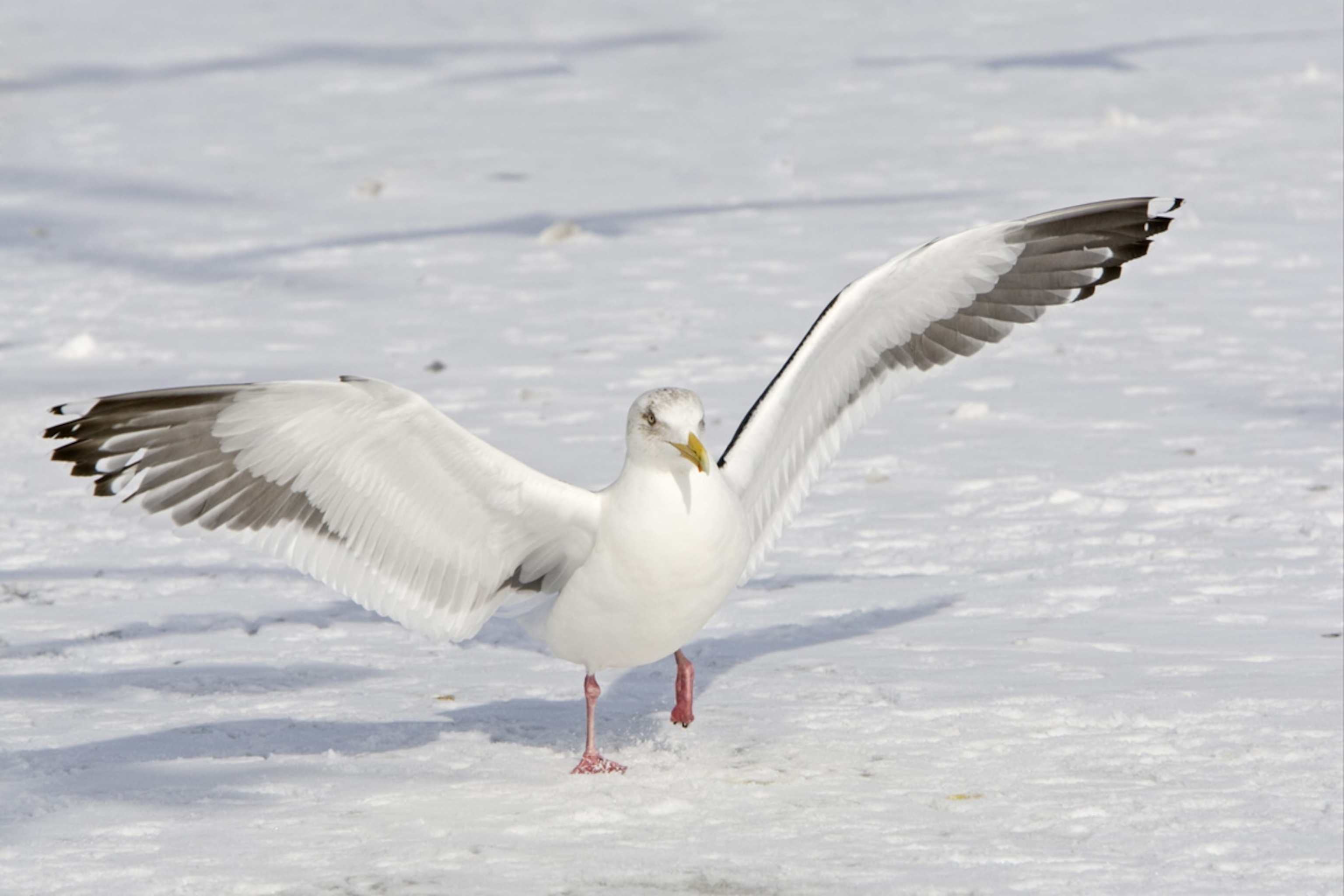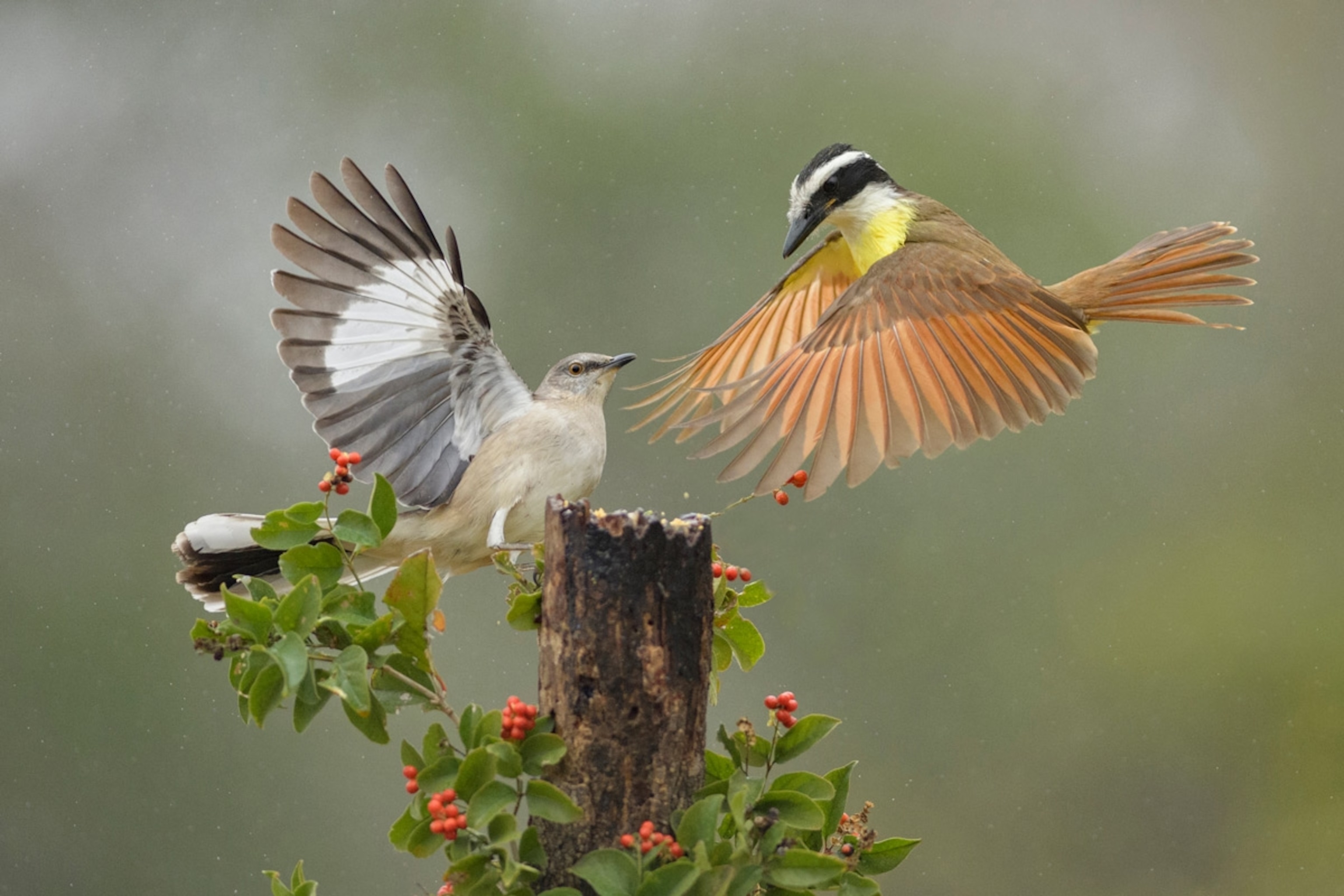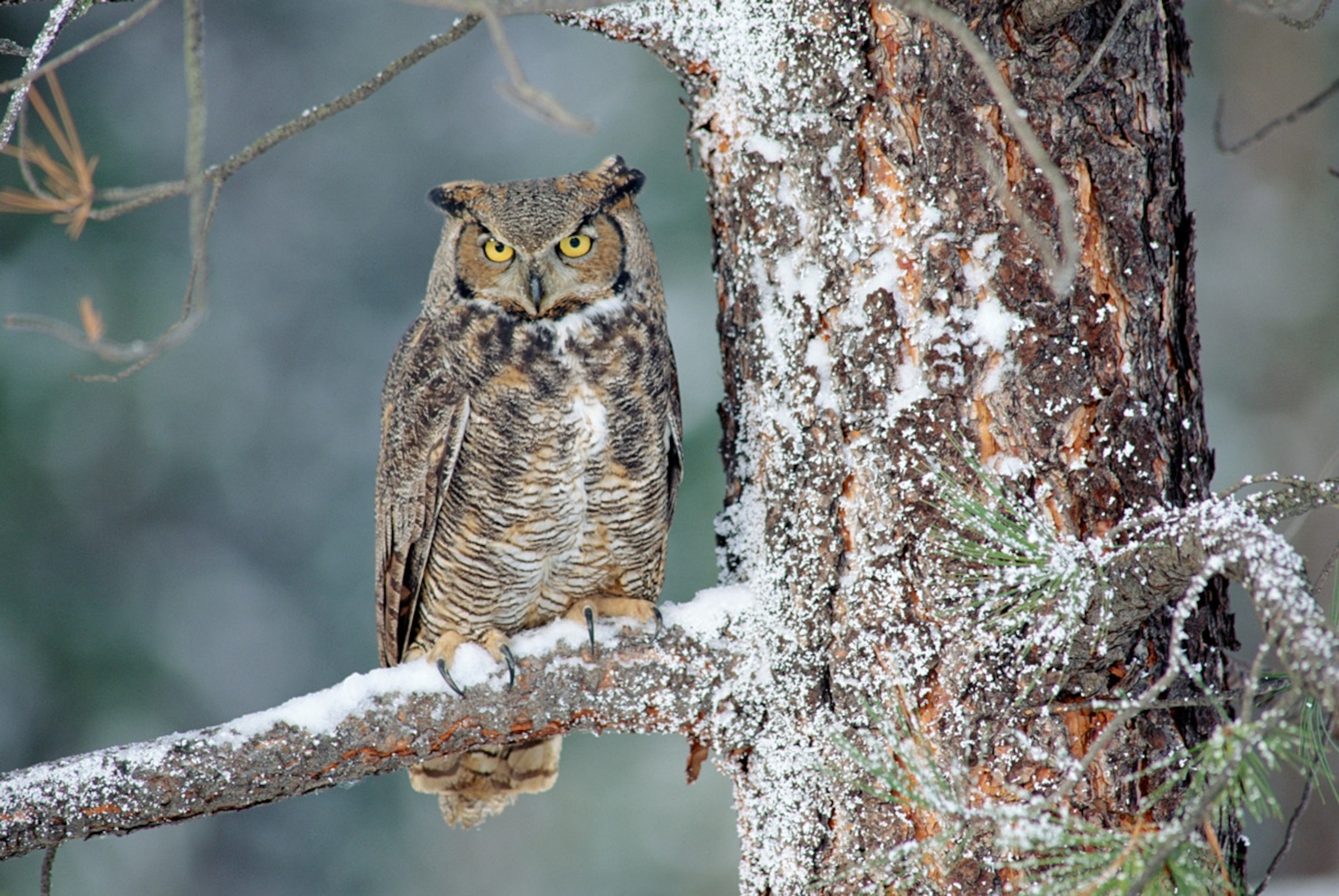
Get your flock outside for some winter bird-watching
Plenty of feathered fliers are still hanging around during chilly months. Show children how to get a bird’s-eye view.
Your kids might think that birds simply disappear for the winter. But plenty of species don’t actually migrate south during the cold months; others might be making your neighborhood their winter home.
In fact, some birds flock together in large numbers when the weather turns chilly, making them easier to spot. From the vibrant northern cardinal to the loud blue jay, plenty of birds are likely hanging around during winter. Here’s how your kids can catch a glimpse.
Why birds stay for the winter

According to Andrew Farnsworth, a senior research associate at the Cornell Lab of Ornithology, when a bird’s spring, summer, and fall habitat still has food and water sources during winter, those fliers will stay in or very near to their territories. And your region might have food and resources that other climates don’t, which attracts migratory birds. “Our ‘winter birds’ might be migrants from farther away and have moved to ‘their tropics,’” Farnsworth says.
Sometimes the local birds in the winter are the strongest of the bunch—Farnsworth says the more dominant individuals might stay put while others in the species migrate. Those hearty birds are able to control their territories and defend their food resources, allowing them to survive and thrive all winter and have offspring the following year.
Many winter birds often have amazing adaptations to help them survive. For instance, Farnsworth notes that Canada geese might add more downy feathers to create pockets of warmth that insulate them from the cold. Others, like chickadees, can alter their metabolisms to add more body fat, which is then used as an energy source to keep them warm. (That’s why chickadees love suet so much!) Gulls such as herring gulls will stand on ice, letting their feet and legs absorb the cold so the rest of their bodies stay warm.

A group approach also helps birds in winter. For instance, house sparrows huddle during the day and roost together at night for warmth. Large flocks also help birds find food and avoid predators—fliers like European starlings usually form their largest flocks in winter to help each other locate scarce food, and mixed-species flocks can often be seen in the winter skies mobbing predators like cooper’s and sharp-shinned hawks.
Where to find winter birds
Winter birds are looking for food, water, and protection—and that’s exactly what Farnsworth says families should look for as well when scoping out these feathered fliers.

Birds seek out fruiting trees and bushes, so check out the native vegetation in your area with seeds or trees with seed pods. Winter treats for birds include thistle, any grasses that have gone to seed, as well as fruit like small berries and crabapples. Vegetation near buildings and heat sources (like exhaust vents) can also attract birds looking for insects living in those warmer microclimates.
You also might see a smackdown between birds fighting over food. For instance, Farnsworth says that northern mockingbirds will mightily defend a berry bush or crabapple tree to drive away sneaky thieves.
Frozen waterways are also great places to spy birds—just look for the open water where birds might be feeding off the ice. The same goes for snow-covered ground; look for open areas in fields where fliers are hunting small mammals and other available prey.

Farnsworth suggests looking for large hawks and other raptors, like red-tailed and red-shouldered hawks, perched on bare tree branches, telephone poles, and high wires. Owls—like great horned and barred owls—are usually nestled on branches toward the trunks of thick conifer trees, where they can stay hidden from smaller birds. He adds that field hunters like the short-eared owl tend to hunt low, flying closer to the ground.
But maybe the most fun owl-watching tip is their telltale sign: regurgitated pellets. These are tightly packed, indigestible leftovers of rodents, birds, and bugs that can be found on the ground near coniferous trees.
Get outside for bird-watching
If you’re not sure you can get kids outside just to watch birds, Farnsworth suggests these activities as well.

Count them up. Find a large flock, then challenge one person to guess how many birds are in it as the other one quickly counts them. Experiment by tracking the numbers at different times during the day or week.
Make a bird feeder. Empower children to help birds get through the winter months with this DIY activity.
Start a journal. Encourage kids to write down, draw, or take photos of the winter birds they see, then compare them to what they observe in other seasons. See if they can figure out which species are year-round and which are migratory.
Follow the sound. Have kids stand quietly until they hear a bird sound, like the drumming of a woodpecker or the ruckus of chickadees and jays. Then ask them to walk toward the sound for 10 steps, then stop and listen again. (If you’re in a state or national park, make sure you stay on the trail.) Repeat until they spot the bird—or it spots them!
Search high and low. With a pair of binoculars, stand in one spot and explore different levels of the trees. Zoom in on the tops, then closer to the trunk, then directly below the branches on the ground. Kids might spot some cool hidden birds this way.
Draw a winter bird habitat. Using crayons or markers, have kids draw a perfect habitat for winter birds, featuring the cold-weather fliers that they’ve observed. Make sure they include food, habitat, and water resources that birds need to survive the winter.




